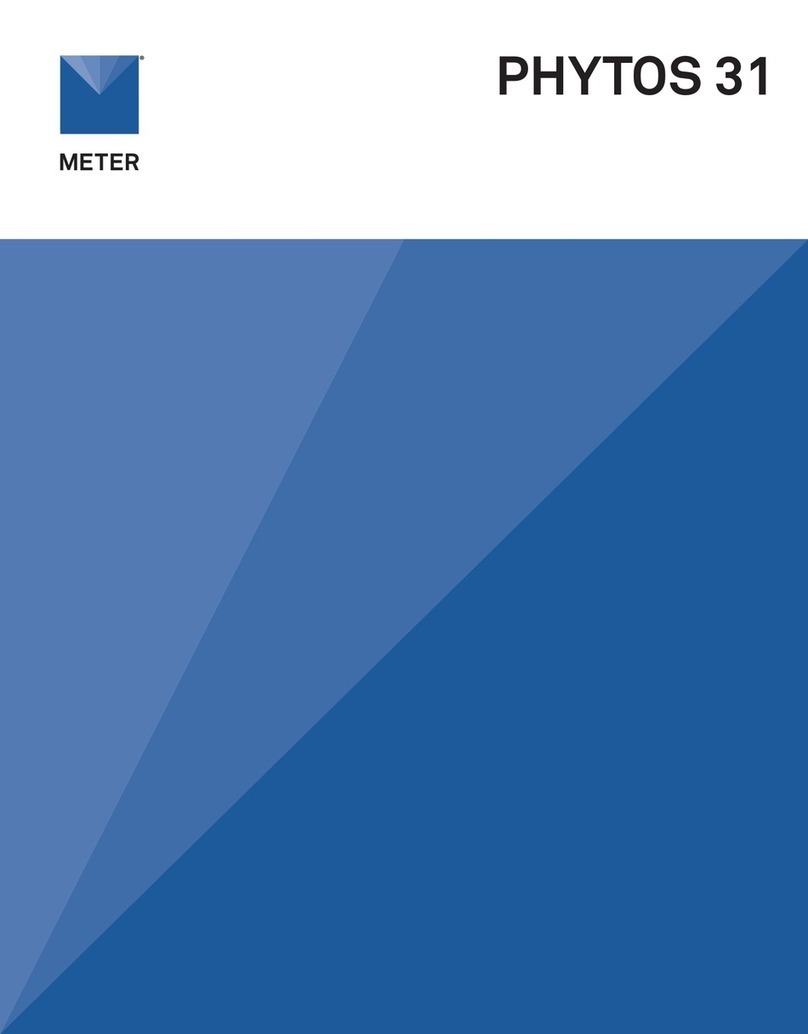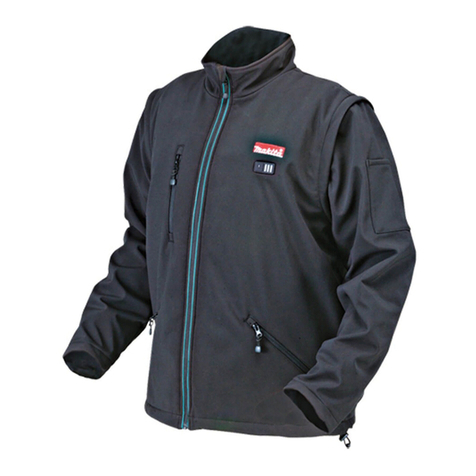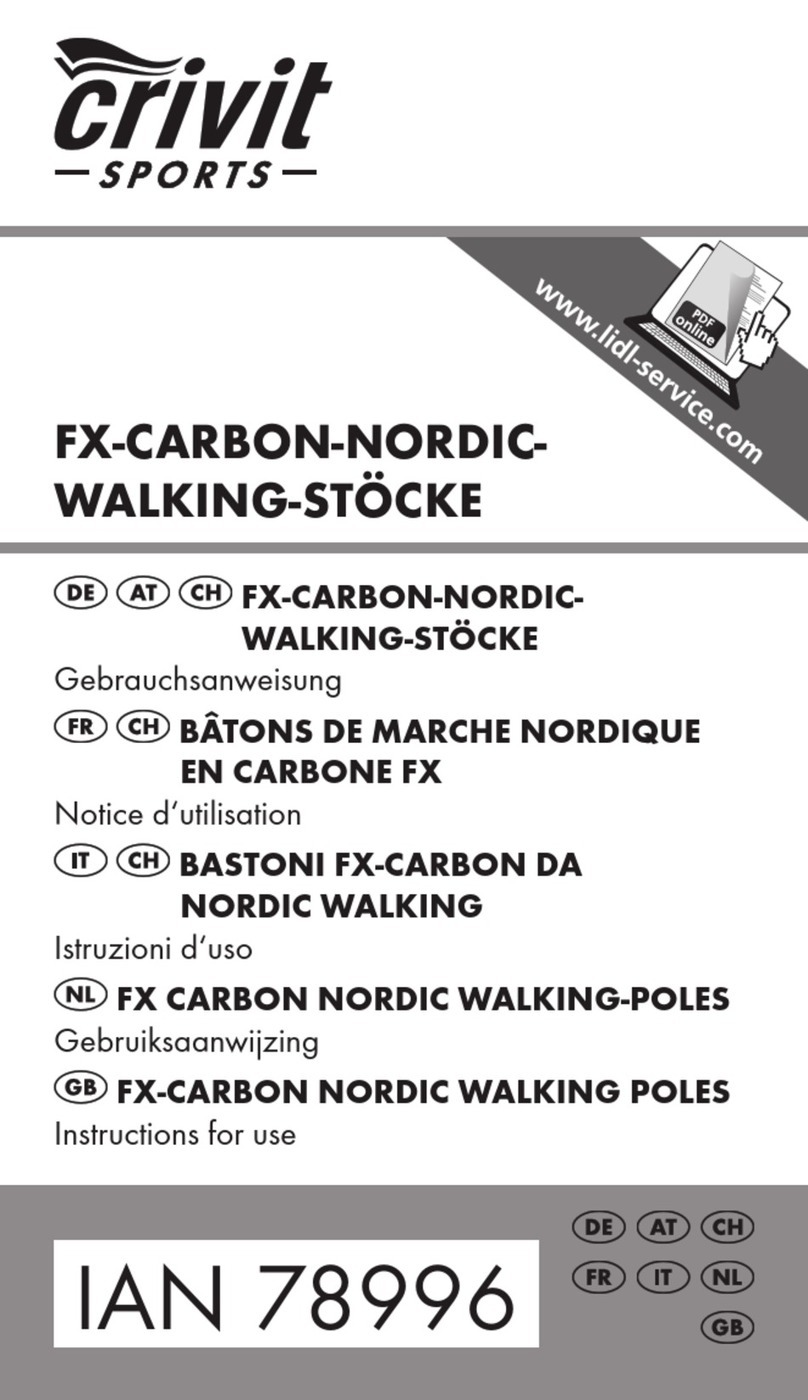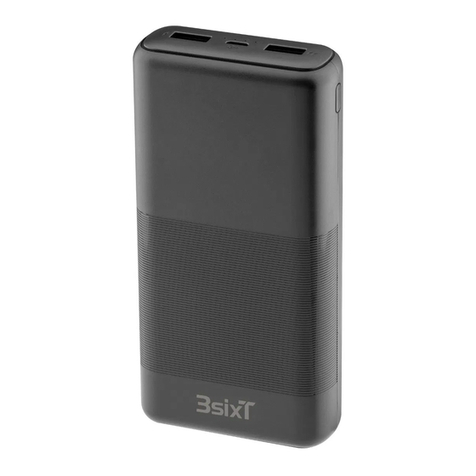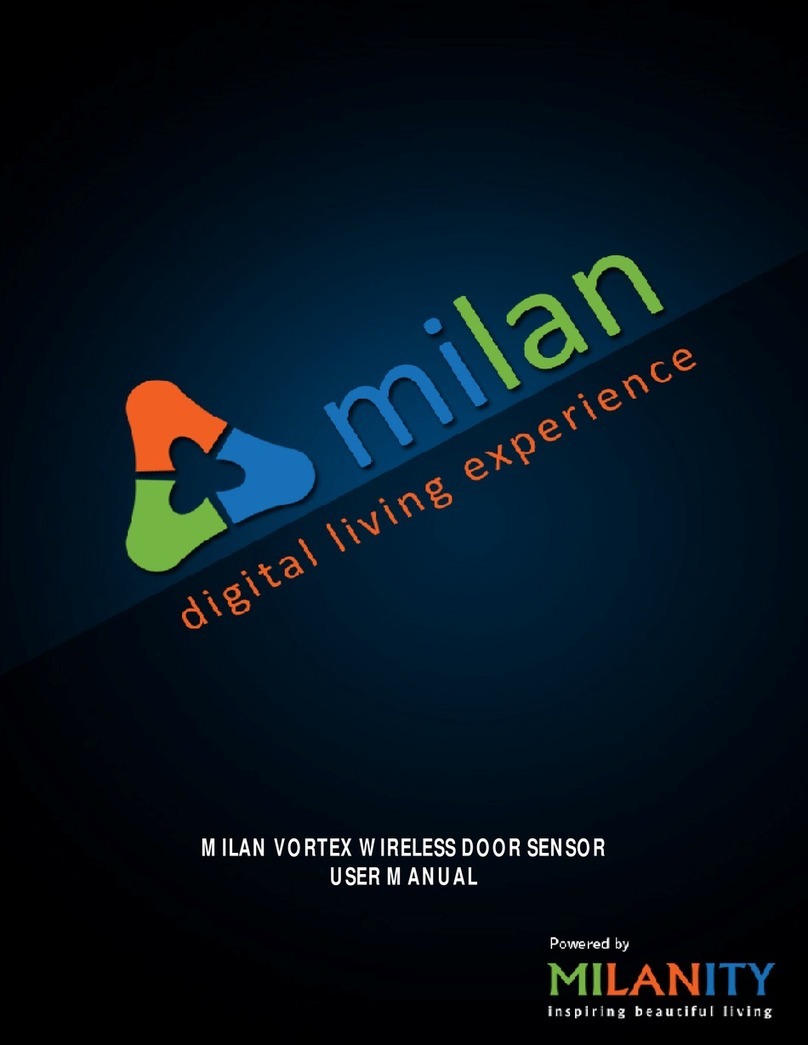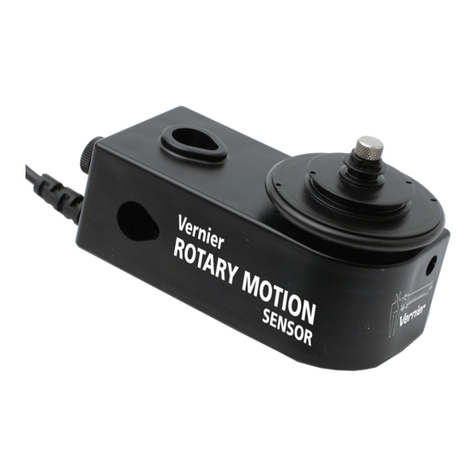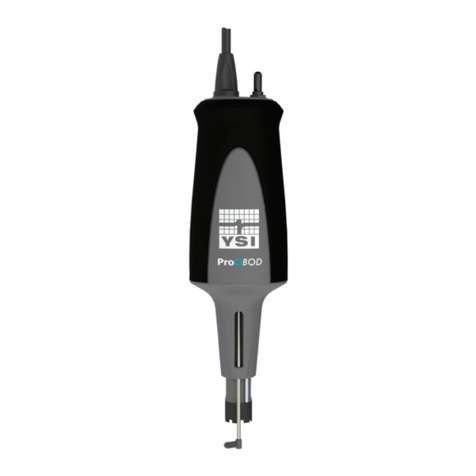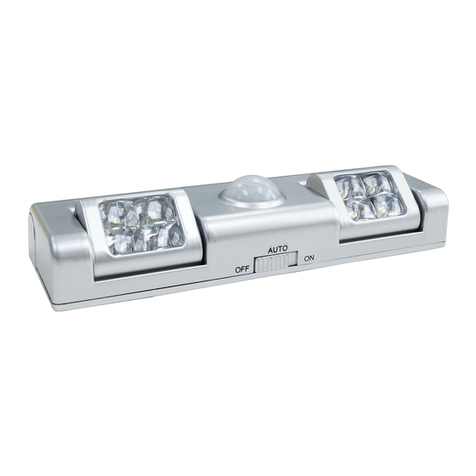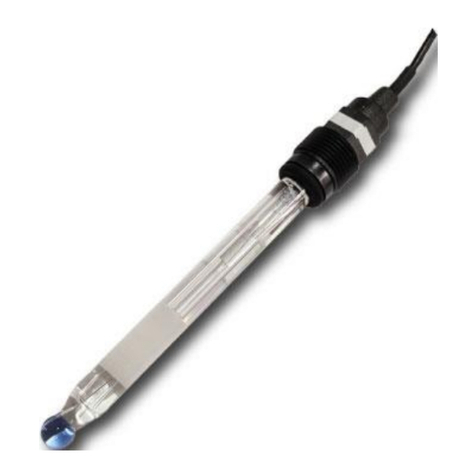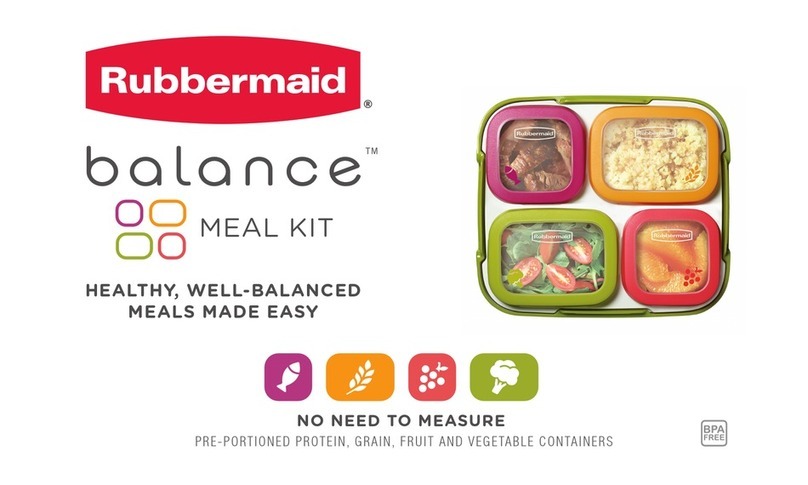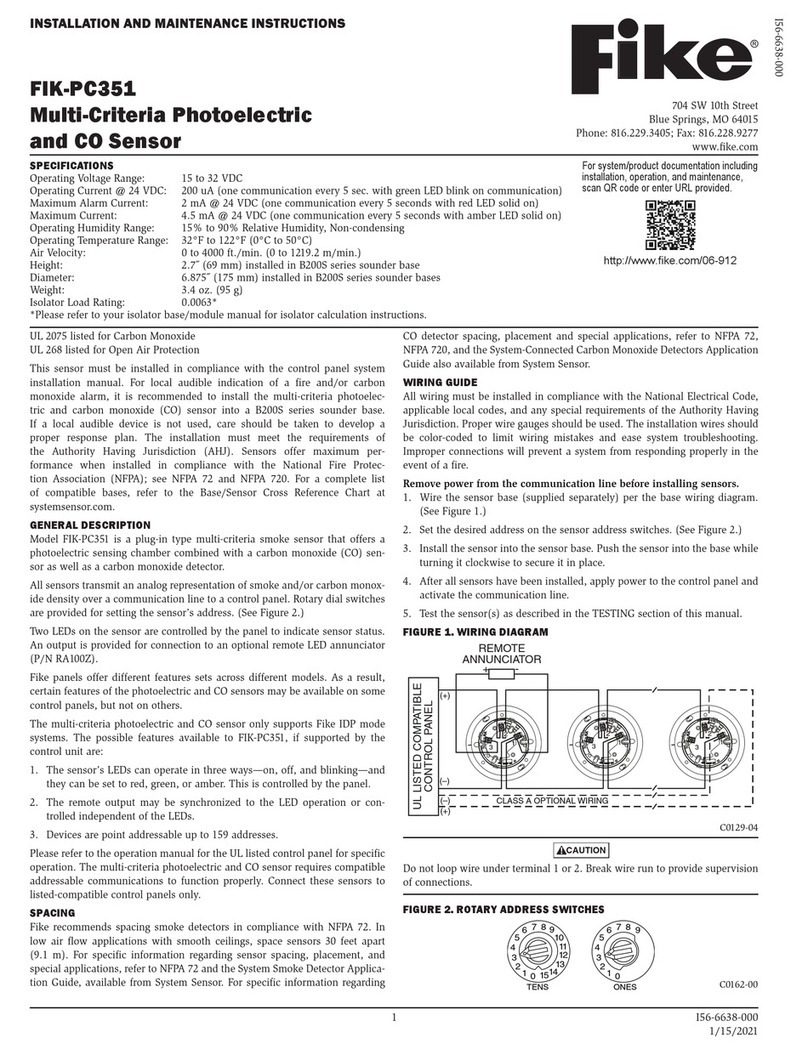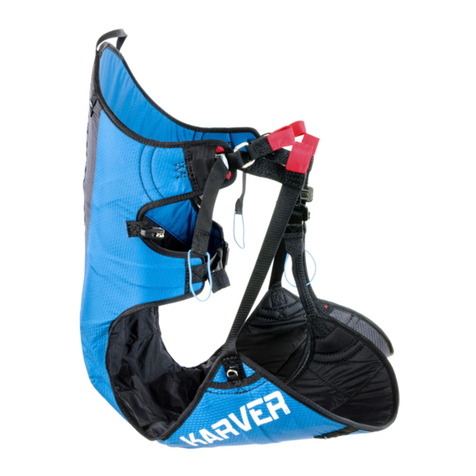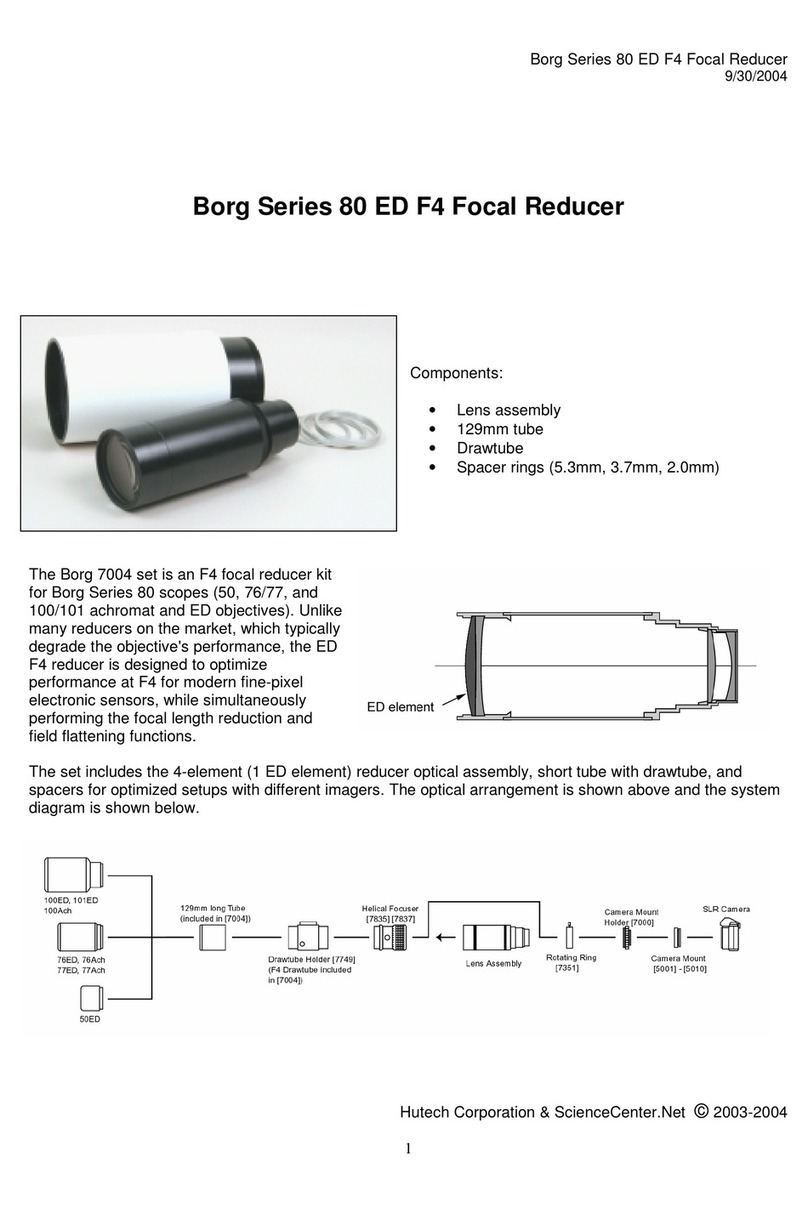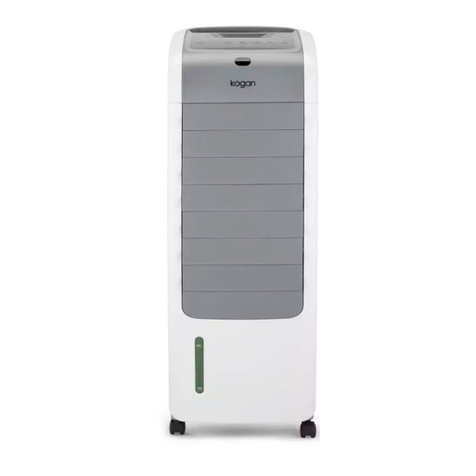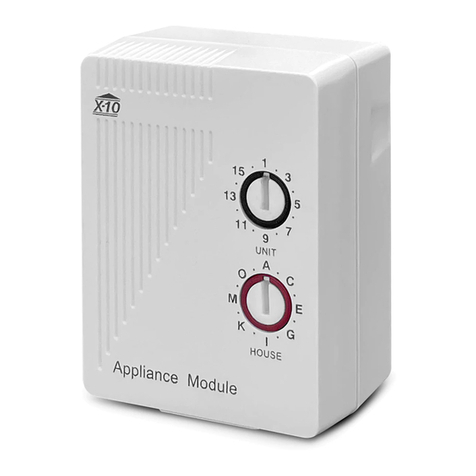METER TEROS 11 Assembly Instructions

TEROS 11/12 INTEGRATOR GUIDE
18224-02
2.15.2019
SENSOR DESCRIPTION
The TEROS 11 Soil Moisture and Temperature sensor and the TEROS 12 Soil Moisture, Temperature,
and Electrical Conductivity (EC) sensor are accurate tools for monitoring volumetric water content
(VWC), temperature in soil and soilless substrates, and electrical conductivity (TEROS 12 only). The
TEROS11/12 determines VWC using capacitance/frequency-domain technology. The sensor uses a 70 MHz
frequency, which minimizes textural and salinity effects, making the TEROS 11/12 accurate in most mineral
soils. The TEROS 11/12 uses a thermistor in the center needle to measure temperature and electrical
conductivity (TEROS 12 only) using a stainless-steel electrode array.
For a more detailed description of how this sensor makes measurements, refer to the TEROS 11/12 User Manual.
APPLICATIONS
TEROS 11
• Volumetric water content VWC
• Soil/substrate water balance
• Irrigation management
• Soil/substrate temperature measurement
• Plant growth research
TEROS 12
• Volumetric water content VWC
• Soil/substrate water balance
• Irrigation management
• Soil/substrate temperature measurement
• Solute/fertilizer movement
• Soil EC measurement
ADVANTAGES
• Three-wire sensor interface: power, ground, and data
• Digital sensor communicates multiple measurements over serial interface
• Robust thermistor for accurate temperature measurements
• Low-input voltage requirements
• Low-power design supports battery-operated data loggers
• Robust epoxy encapsulation resists corrosive environments
• Supports SDI-12 or DDI serial communications protocols
• Modern design optimized for low-cost sensing
PURPOSE OF THIS GUIDE
METER provides the information in this integrator guide to help customers establish communication
between these sensors and their data acquisition equipment or field data loggers. Customers using data
loggers that support SDI-12 sensor communications should consult the data logger user manual. METER
sensors are fully integrated into the METER system of plug-and-play sensors, cellular-enabled data loggers,
and data analysis software.
COMPATIBLE FIRMWARE VERSIONS
This guide is compatible with firmware versions 1.07 or newer.
Figure 1 TEROS 11/12 sensor
METER Group, Inc. USA
2365 NE Hopkins Court, Pullman,WA 99163
T +1.509.332.2756 F +1.509.332.5158
E info@metergroup.com W metergroup.com

2
Cable Length
5 m (standard)
75 m (maximum custom cable length)
NOTE: Contact Customer Support if a nonstandard cable
length is needed.
Connector Types
3.5-mm stereo plug connector or stripped and
tinnedwires
Dimensions
Length 9.4 cm (3.70 in)
Width 2.4 cm (0.95 in)
Height 7.5 cm (2.95 in)
Prong Length
5.5 cm (2.17 in)
Volumetric Water Content (VWC)
Range
Mineral soil
calibration
0.00–0.70 m3/m3
Soilless
media
calibration
0.0–1.0 m3/m3
Apparent
dielectric
permittivity (εa )
1 (air) to 80 (water)
NOTE: The VWC range is dependent on the media the sensor
is calibrated to. A custom calibration will accommodate the
necessary ranges for most substrates.
Resolution 0.001 m3/m3
Accuracy
Generic
calibration
±0.03 m3/m3typical
in mineral soils that
have solution electrical
conductivity < 8 dS/m
Medium specific
calibration
±0.01–0.02 m3/m3in any
porous medium
Apparent
dielectric
permittivity (εa )
1–40 (soil range),
±1 εa(unitless)
40–80, 15% of
measurement
Dielectric Measurement Frequency
70 MHz
Temperature
TEROS 11
Range −40 to +60 °C
Resolution 0.1 °C
Accuracy ±1 °C from −40 to 0 °C
±0.5 °C from 0 to +60 °C
NOTE: Temperature measurement, for applicable sensors,
may not be accurate if sensor is not fully immersed in the
medium of interest, due to longer equilibration time.
TEROS 12
Range −40 to +60 °C
Resolution 0.1 °C
Accuracy ±0.5 °C from −40 to 0 °C
±0.3 °C from 0 to +60 °C
Electrical Conductivity (ECb) (TEROS 12 Only)
Range 0–20 dS/m (bulk)
Resolution 0.001 dS/m
Accuracy ±(5% + 0.01 dS/m)
from0–10 dS/m
±8% from 10–20 dS/m
PHYSICAL SPECIFICATIONS
SPECIFICATIONS
MEASUREMENT SPECIFICATIONS
COMMUNICATION SPECIFICATIONS
Output
DDI serial or
SDI-12 communication protocol
Data Logger Compatibility
METER ZL6, EM60, and Em50 data loggers
or any data acquisition system capable of
4.0- to 15-VDC power and serial or SDI-12
communication

3
EQUIVALENT CIRCUIT AND CONNECTION TYPES
Refer to Figure 2 and Figure 3 to connect the TEROS 11/12 to a data logger. Figure 2 provides a low-impedance
variant of the recommended SDI-12 specification.
PIGTAIL CABLE
Ground (bare)
Data output (orange)
Power (brown)
GND
DATA
GND
510
R1
R2
100K
C1
220PF
L1
10UH
Figure 2 Equivalent circuit diagram
Supply Voltage (VCC to GND)
Minimum 4.0 VDC
Typical NA
Maximum 15.0 VDC
Digital Input Voltage (logic high)
Minimum 2.8 V
Typical 3.6 V
Maximum 3.9 V
Digital Input Voltage (logic low)
Minimum –0.3 V
Typical 0.0 V
Maximum 0.8 V
Digital Output Voltage (logic high)
Minimum NA
Typical 3.6 V
Maximum NA
Power Line Slew Rate
Minimum 1.0 V/ms
Typical NA
Maximum NA
Current Drain (during 25-ms measurement)
Minimum 3.0 mA
Typical 3.6 mA
Maximum 16.0 mA
Current Drain (while asleep)
Minimum NA
Typical 0.03 mA
Maximum NA
Operating Temperature Range
Minimum –40 °C
Typical NA
Maximum +60 °C
NOTE: Sensors may be used at higher temperatures under
certain conditions; contact Customer Support for assistance.
Power Up Time (DDI serial)
Minimum 80 ms
Typical NA
Maximum 100 ms
Power Up Time (SDI-12)
Minimum NA
Typical 245 ms
Maximum NA
Measurement Duration
Minimum 25 ms
Typical NA
Maximum 50 ms
COMPLIANCE
Manufactured under ISO 9001:2015
EM ISO/IEC 17050:2010 (CE Mark)
2014/30/EU and 2011/65/EU
EN61326-1:2013 and EN55022/CISPR 22
STEREO CABLE
Ground
Data output
Power
Figure 3 Connection types
ELECTRICAL AND TIMING CHARACTERISTICS

4
SAFETY PRECAUTIONS
METER sensors are built to the highest standards, but misuse, improper protection, or improper installation
may damage the sensor and possibly void the warranty. Before integrating sensors into a sensor network,
followthe recommended installation instructions and implement safeguards to protect the sensor from
damaging interference.
SURGE CONDITIONS
Sensors have built-in circuitry that protects them against common surge conditions. Installations in
lightning-prone areas, however, require special precautions, especially when sensors are connected to a
well-grounded third-party logger.
Visit metergroup.com for articles containing more information.
POWER AND GROUNDING
Ensure there is sufficient power to simultaneously support the maximum sensor current drain for all the
sensors on the bus. The sensor protection circuitry may be insufficient if the data logger is improperly
powered or grounded. Refer to the data logger’s installation instructions. Improper grounding may affect the
sensor output as well as sensor performance.
Visit metergroup.com for articles containing more information.
CABLES
Improperly protected cables can lead to severed cables or disconnected sensors. Cabling issues can be
caused by many factors, including rodent damage, driving over sensor cables, tripping over the cable, not
leaving enough cable slack during installation, or poor sensor wiring connections. To relieve strain on the
connections and prevent loose cabling from being inadvertently snagged, gather and secure the cable
travelling between the TEROS 11/12 and the data acquisition device to the mounting mast in one or more
places. Install cables in conduit or plastic cladding when near the ground to avoid rodent damage. Tie excess
cable to the data logger mast to ensure cable weight does not cause sensor to unplug.
SENSOR COMMUNICATIONS
METER digital sensors feature a serial interface with shared receive and transmit signals for communicating
sensor measurements on the data wire (Figure 3). The sensor supports two different protocols: SDI-12 and DDI
serial. Each protocol has implementation advantages and challenges. Please contact Customer Support if the
protocol choice for the desired application is not obvious.
SDI-12 INTRODUCTION
SDI-12 is a standards-based protocol for interfacing sensors to data loggers and data acquisition equipment.
Multiple sensors with unique addresses can share a common 3-wire bus (power, ground, and data). Two-way
communication between the sensor and logger is possible by sharing the data line for transmit and receive
as defined by the standard. Sensor measurements are triggered by protocol command. The SDI-12 protocol
requires a unique alphanumeric sensor address for each sensor on the bus so that a data logger can send
commands to and receive readings from specific sensors.
Download the SDI-12 Specification v1.3 to learn more about the SDI-12 protocol.
DDI SERIAL INTRODUCTION
The DDI serial protocol is the method used by the METER data loggers for collecting data from the sensor. This
protocol uses the data line configured to transmit data from the sensor to the receiver only (simplex). Typically,
the receive side is a microprocessor UART or a general-purpose I/O pin using a bitbang method to receive data.
Sensor measurements are triggered by applying power to the sensor.
INTERFACING THE SENSOR TO A COMPUTER
The serial signals and protocols supported by the sensor require some type of interface hardware to be
compatible with the serial port found on most computers (or USB-to-serial adapters). There are several
SDI-12 interface adapters available in the marketplace; however, METER has not tested any of these

5
interfaces and cannot make a recommendation as to which adapters work with METER sensors. METER
data loggers and the ProCheck hand-held device can operate as a computer-to-sensor interface for
making on-demand sensor measurements. For more information, please contact Customer Support.
METER SDI-12 IMPLEMENTATION
METER sensors use a low-impedance variant of the SDI-12 standard sensor circuit (Figure 2). During the
power-up time, sensors output some sensor diagnostic information and should not be communicated with
until the power-up time has passed. After the power up time, the sensors are compatible with all commands
listed in the SDI-12 Specification v1.3 except for the continuous measurement commands (aR0–aR9 and
aRC0–aRC9) and the concurrent measurement commands (aC–aC9 and aCC0–aCC9). M, R, and Ccommand
implementations are found on pages 8–9. The aR3 and aR4 commands are used by METER systems and
as a result use space delimination, instead of the sign delimination required by the SDI-12 standard.
Out of the factory, all METER sensors start with SDI-12 address 0and print out the DDI serial startup string
during the power-up time. This can be interpreted by non-METER SDI-12 sensors as a pseudo-break condition
followed by a random series of bits.
The TEROS 11/12 will omit the DDI serial startup string (sensor identification) when the SDI-12 address is
nonzero. Changing the address to a nonzero address is recommended for this reason.
SENSOR BUS CONSIDERATIONS
SDI-12 sensor buses require regular checking, sensor upkeep, and sensor troubleshooting. If one sensor goes
down, that may take down the whole bus even if the remaining sensors are functioning normally. Power cycling
the SDI-12 bus when a sensor is failing is acceptable, but METER does not recommend scheduling power cycling
events on an SDI-12 bus more than once or twice per day. Many factors influence the effectiveness of the bus
configuration. Visit metergroup.com for articles and virtual seminars containing more information.
SDI-12 CONFIGURATION
Table1 lists the SDI-12 communication configuration.
Table1 SDI-12 communication configuration
Baud Rate 1200
Start Bits 1
Data Bits 7 (LSB first)
Parity Bits 1 (even)
Stop Bits 1
Logic Inverted (active low)
SDI-12 TIMING
All SDI-12 commands and responses must adhere to the format in Figure 4 on the data line. Both the
command and response are preceded by an address and terminated by a carriage return and line feed
combination (<CR><LF>) and follow the timing shown in Figure 5.
START STOPD0 D1 D2 D3 D4 D5 D6 EP
Figure 4 Example SDI-12 transmission of the character 1 (0x31)

6
Break
(at least 12 ms)
Marking
(at least 8.33 ms)
Marking
(at least 8.33 ms)
Comman
dR
esponse
SENSORDATA LOGGER
Maximum time*Sensor must respond
within 15 ms
*Maximum time is dependent upon the amount of data returned for the command sent.
Figure 5 Example data logger and sensor communication
COMMON SDI-12 COMMANDS
This section includes tables of common SDI-12 commands that are often used in an SDI-12 system and the
corresponding responses from METER sensors.
IDENTIFICATION COMMAND (aI!)
The Identification command can be used to obtain a variety of detailed information about the connected sensor.
An example of the TEROS 11 command and response is shown in Example 1 and the TEROS11 command and
response is shown in Example 2, where the command is in bold and the response follows the command.
Example 1 1I!113METER␣ ␣ ␣TER11␣107631800001 (TEROS 11)
Parameter
Fixed
Character
Length Description
1I! 3Data logger command.
Request to the sensor for information from sensor address 1.
11
Sensor address.
Prepended on all responses, this indicates which sensor on the bus is returning
the following information.
13 2 Indicates that the target sensor supports SDI-12 Specification v1.3.
METER␣ ␣ ␣ 8Vendor identification string.
(METER and three spaces ␣ ␣ ␣ for all METER sensors)
TER11␣6
Sensor model string.
This string is specific to the sensor type.
For the TEROS 11, the string is TER11.
107 3
Sensor version.
This number divided by 100 is the METER sensor version
(e.g., 107 is version 1.07).
631800001 ≤13,
variable
Sensor serial number.
This is a variable length field. It may be omitted for older sensors.

7
Example 2 1I!113METER␣ ␣ ␣TER12␣107631800001 (TEROS 12)
Parameter
Fixed
Character
Length Description
1I! 3Data logger command.
Request to the sensor for information from sensor address 1.
11
Sensor address.
Prepended on all responses, this indicates which sensor on the bus is returning
the following information.
13 2 Indicates that the target sensor supports SDI-12 Specification v1.3.
METER␣ ␣ ␣ 8Vendor identification string.
(METER and three spaces ␣ ␣ ␣ for all METER sensors)
TER12␣6
Sensor model string.
This string is specific to the sensor type.
For the TEROS 12, the string is TER12.
107 3
Sensor version.
This number divided by 100 is the METER sensor version
(e.g., 107 is version 1.07).
631800001 ≤13,
variable
Sensor serial number.
This is a variable length field. It may be omitted for older sensors.
CHANGE ADDRESS COMMAND (aAB!)
The Change Address command is used to change the sensor address to a new address. All other commands
support the wildcard character as the target sensor address except for this command. All METER sensors
have a default address of 0 (zero) out of the factory. Supported addresses are alphanumeric (i.e., a–z, A–Z, and
0–9). An example output from a METER sensor is shown in Example 3, where the command is in bold and the
response follows the command.
Example 3 1A0!0
Parameter
Fixed
Character
Length Description
1A0! 4Data logger command.
Request to the sensor to change its address from 1to a new address of 0.
01
New sensor address.
For all subsequent commands, this new address will be used by the
targetsensor.
ADDRESS QUERY COMMAND (?!)
While disconnected from a bus, the Address Query command can be used to determine which sensors are
currently being communicated with. Sending this command over a bus will cause a bus contention where all
the sensors will respond simultaneously and corrupt the data line. This command is helpful when trying to
isolate a failed sensor. Example 4 shows an example of the command and response, where the command is in
bold and the response follows the command. The question mark (?) is a wildcard character that can be used in
place of the address with any command except the Change Address command.
Example 4 ?!0
Parameter
Fixed
Character
Length Description
?! 2Data logger command.
Request for a response from any sensor listening on the data line.
01Sensor address.
Returns the sensor address to the currently connected sensor.
COMMAND IMPLEMENTATION
The following tables list the relevant Measurement (M), Continuous (R), and Concurrent (C) commands and
subsequent Data (D) commands when necessary.

8
MEASUREMENT COMMANDS IMPLEMENTATION
Measurement (M) commands are sent to a single sensor on the SDI-12 bus and require that subsequent Data
(D) commands are sent to that sensor to retrieve the sensor output data before initiating communication with
another sensor on the bus.
Please refer to Table2 and for an explanation of the command sequence and see Table7 for an explanation of
response parameters.
Table2 aM! command sequence
Command Response
This command reports instantaneous values.
aM! atttn
aD0! a+<calibratedCountsVWC>±<temperature>+<electricalConductivity>
NOTES: <electricalConductivity> is only output on the TEROS 12.
The measurement and corresponding data commands are intended to be used back to back. After a measurement command is processed
by the sensor, a service request a <CR><LF> is sent from the sensor signaling the measurement is ready. Either wait until ttt seconds have
passed or wait until the service request is received before sending the data commands.See the SDI-12 Specifications v1.3 document for
more information.
CONCURRENT MEASUREMENT COMMANDS IMPLEMENTATION
Concurrent (C) measurement commands are typically used with sensors connected to a bus. Concurrent (C)
commands for this sensor deviate from the standard Ccommand implementation. First, send the Ccommand,
wait the specified amount of time detailed in the Ccommand response, and then use Dcommands to read its
response prior to communicating with another sensor.
Please refer to Table3 for an explanation of the command sequence and see Table7 for an explanation of
response parameters.
Table3 aC! measurement command sequence
Command Response
This command reports instantaneous values.
aC! atttnn
aD0! a+<calibratedCountsVWC>±<temperature>+<electricalConductivity>
NOTES: <electricalConductivity> is only output on the TEROS 12.
This command does not adhere to the SDI-12 concurrent command requirements. See METER SDI-12 Implementation for more information.
The measurement and corresponding data commands are intended to be used back to back. After a measurement command is processed
by the sensor, a service request a <CR><LF> is sent from the sensor signaling the measurement is ready. Either wait until ttt seconds have
passed or wait until the service request is received before sending the data commands.See the SDI-12 Specifications v1.3 document for
more information.
CONTINUOUS MEASUREMENT COMMANDS IMPLEMENTATION
Continuous (R) measurement commands trigger a sensor measurement and return the data automatically
after the readings are completed without needing to send a Dcommand.
Please refer to Table4 through Table6 for an explanation of the command sequence and see Table7 for an
explanation of response parameters.
Table4 aR0! measurement command sequence
Command Response
This command reports instantaneous values.
aR0! a+<calibratedCountsVWC>±<temperature>+<electricalConductivity>
NOTES: <electricalConductivity> is only output on the TEROS 12.
This command does not adhere to the SDI-12 response timing. See METER SDI-12 Implementation for moreinformation.

9
Table5 aR3! measurement command sequence
Command Response
This command reports instantaneous values.
aR3! a<TAB><calibratedCountsVWC> <temperature> <electricalConductivity><CR><sensorType><Checksum><CRC>
NOTES: <electricalConductivity> is only output on the TEROS 12.
This command does not adhere to the SDI-12 response format or timing. See METER SDI-12 Implementation for more information.
Table6 aR4! measurement command sequence
Command Response
This command reports instantaneous values.
aR4! a<TAB><calibratedCountsVWC> <temperature> <electricalConductivity><CR><sensorType><Checksum><CRC>
NOTES: <electricalConductivity> is only output on the TEROS 12.
This command does not adhere to the SDI-12 response format or timing. See METER SDI-12 Implementation for more information.
PARAMETERS
Table7 lists the parameters, unit measurement, and a description of the parameters returned in command
responses for TEROS 11/12.
Table7 Parameter Descriptions
Parameter Unit Description
±—Positive or negative sign denoting sign of the next value
a—SDI-12 address
n—Number of measurements (fixed width of 1)
nn —Number of measurements with leading zero if necessary (fixed width of 2)
ttt sMaximum time measurement will take (fixed width of 3)
<TAB> — Tab character
<CR> — Carriage return character
<LF> — Line feed character
<calibratedCountsVWC> — Calibrated ADC counts for volumetric water content
<temperature> °C Air temperature
<electricalConductivity> dS/m Bulk electrical conductivity normalized to 25 °C (TEROS 12 only)
<sensorType> —
ASCII character denoting the sensor type
For TEROS 11, the character is h
For TEROS 12, the character is g
<Checksum> —METER serial checksum
<CRC> —METER 6-bit CRC
DDI SERIAL COMMUNICATION
The DDI serial communications protocol is ideal for systems that have dedicated serial signaling lines for each
sensor or use a multiplexer to handle multiple sensors. The serial communications are compatible with many
TTL serial implementations that support active-high logic levels using 0 to 3.6 V signal levels. When the sensor
is first powered, it automatically makes measurements of the integrated transducers then outputs a response
over the data line. Systems using this protocol control the sensor excitation to initiate data transfers from
the sensor. This protocol is subject to change as METER improves and expands the line of digital sensors and
dataloggers. TEROS 11/12 will omit the DDI serial startup string when the SDI-12 address is nonzero.
NOTE: Out of the factory, all METER sensors start with SDI-12 address 0and print out the startup string when power cycled.

10
DDI SERIAL TIMING
Table8 lists the DDI serial communication configuration.
Table8 DDI serial communication configuration
Baud Rate 1200
Start Bits 1
Data Bits 8 (LSB first)
Parity Bits 0 (none)
Stop Bits 1
Logic Standard (active high)
At power up, the sensor will pull the data line high within 100 ms to indicate that the sensor is taking a reading
(Figure 6). When the reading is complete, the sensor begins sending the serial signal out the data line adhering
to the format shown in Figure 7. Once the data is transmitted, the sensor goes into SDI-12 communication
mode. To get another serial signal, the sensor must be power cycled.
NOTE: Sometimes the signaling from the sensor can confuse typical microprocessor UARTs. The sensor holds the data line low while
taking measurements.The sensor raises the line high to signal the logger that it will send a measurement.Then the sensor may take some
additional measurements before starting to clock out the first data byte starting with a typical start bit (low). Once the first start bit is sent,
typical serial timing is valid; however, the signal transitions before this point are not serial signaling and may be misinterpreted by theUART.
SDI-12 ready
DDI serial
Measurement
duration
Up to 100 ms
Power applied
Figure 6 Data line DDI serial timing
START STOP
D0 D1 D2 D3 D4 D5 D6 D7
Figure 7 Example DDI serial transmission of the character 9 (0x39)
DDI SERIAL RESPONSE
This section contains tables detailing the DDI serial response.
Table9 DDI serial response
COMMAND RESPONSE
NA <TAB><calibratedCountsVWC> <temperature> <electricalConductivity><CR><sensorType><Checksum><CRC>
NOTES: <electricalConductivity> is only output on the TEROS 12.
There is no actual command.The response is returned automatically upon power up.

11
DDI SERIAL CHECKSUM
These checksums are used in the continuous commands R3 and R4 as well as the DDI serial response. The
legacy checksum is computed from the start of the transmission to the sensor identification character,
excluding the sensor address.
TEROS 11 LEGACY CHECKSUM EXAMPLE
Legacy checksum example input is <TAB>1797.7 21.8<CR>h and the resulting checksum output is D.
TEROS 12 LEGACY CHECKSUM EXAMPLE
Legacy checksum example input is <TAB>2749.0 23.8 660<CR>g and the resulting checksum output is 8.
uint8_t LegacyChecksum(const char * Response)
{
uint16_t length;
uint16_t i;
uint16_t sum = 0;
// Finding the length of the response string
length = strlen(response);
// Adding characters in the response together
for( i = 0; i < length; i++ )
{
sum += response[i];
if(response[i] == '\r')
{
// Found the beginning of the meta data section of the response
break;
}
}
// include the sensor type into the checksum
sum += response[++i];
// Convert checksum to a printable character
sum = sum % 64 + 32;
return sum;
}

12
TEROS 11 CRC6
The more robust CRC6, if available, utilizes the CRC-6-CDMA2000-A polynomial with the value 48 added to the
results to make this a printable character and is computed from the start of the transmission to the legacy
checksum character, excluding the sensor address.
CRC6 checksum example input is <TAB>1797.2 21.8<CR>hD and the resulting checksum output is 2.
TEROS 12 CRC6
The more robust CRC6, if available, utilizes the CRC-6-CDMA2000-A polynomial with the value 48 added to the
results to make this a printable character and is computed from the start of the transmission to the legacy
checksum character, excluding the sensor address.
CRC6 checksum example input is <TAB>2749.0 23.8 660<CR>g8 and the resulting checksum output is O
(uppercase o).
uint8_t CRC6_Offset(const char *buffer)
{
uint16_t byte;
uint16_t i;
uint16_t bytes;
uint8_t bit;
uint8_t crc = 0xfc; // Set upper 6 bits to 1’s
// Calculate total message length—updated once the meta data section is found
bytes = strien(buffer)
// Loop through all the bytes in the buffer
for(byte = 0; byte < bytes; byte++)
{
// Get the next byte in the buffer and XOR it with the crc
crc ^= buffer[byte];
// Loop through all the bits in the current byte
for(bit = 8; bit > 0; bit--)
{
// If the uppermost bit is a 1...
if(crc & 0x80)
{
// Shift to the next bit and XOR it with a polynomial
crc = (crc << 1) ^ 0x9c;
}
else
{
// Shift to the next bit
crc = crc << 1;
}
}
if(buffer[byte] == '\r')
{
// Found the beginning of the meta data section of the response
// both sensor type and legacy checksum are part of the crc6
// this requires only two more iterations of the loop so reset
"bytes"
// bytes is incremented at the beginning of the loop, so 3 is added
bytes = byte + 3;
}
}
// Shift upper 6 bits down for crc
crc = (crc >> 2);
// Add 48 to shift crc to printable character avoiding \r \n and !
return (crc + 48);
}

13
CUSTOMER SUPPORT
NORTH AMERICA
Customer service representatives are available for questions, problems, or feedback Monday through Friday,
7:00 am to 5:00 pm Pacific time.
Email: support.environment@metergroup.com
sales.environment@metergroup.com
Phone: +1.509.332.5600
Fax: +1.509.332.5158
Website: metergroup.com
EUROPE
Customer service representatives are available for questions, problems, or feedback Monday through Friday,
8:00 to 17:00 Central European time.
Email: support@metergroup.de
sales@metergroup.de
Phone: +49 89 12 66 52 47
Fax: +49 89 12 66 52 36
Website: metergroup.de
If contacting METER by email, please include the following information:
Name
Address
Phone number
Email address
Instrument serial number
Description of problem
NOTE: For products purchased through a distributor, please contact the distributor directly for assistance.
REVISION HISTORY
The following table lists document revisions.
Revision Date Compatible Firmware Description
02 2.15.2019 1.07 Add TEROS 11
01 4.30.2018 1.00 Correct specifications and measurement value
00 3.1.2018 1.00 Initial release
Other manuals for TEROS 11
2
This manual suits for next models
1
Table of contents
Other METER Accessories manuals
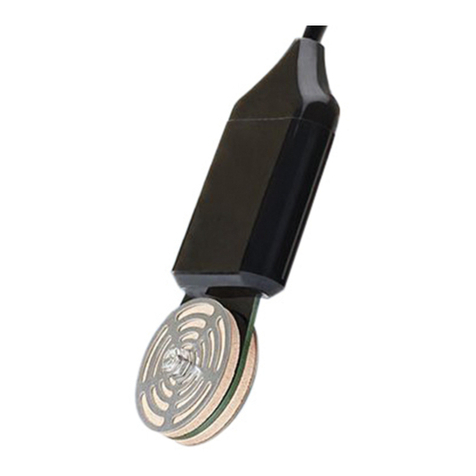
METER
METER TEROS 21 Assembly Instructions

METER
METER TEROS 10 User manual
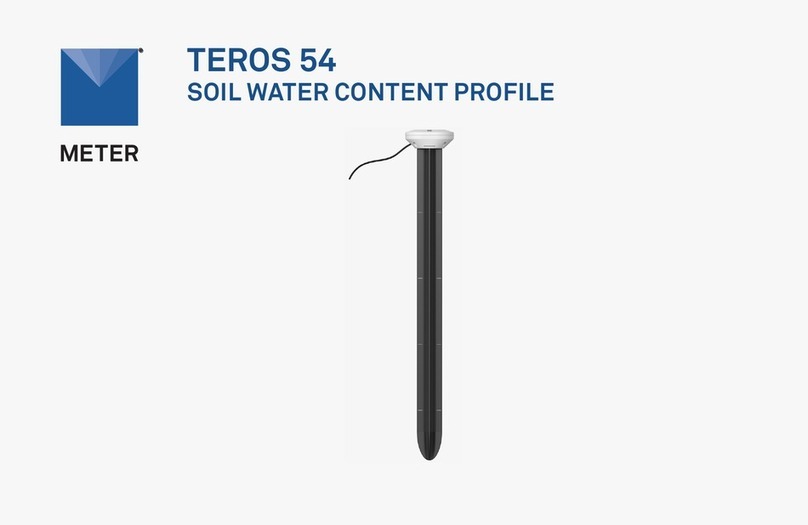
METER
METER TEROS 54 User manual
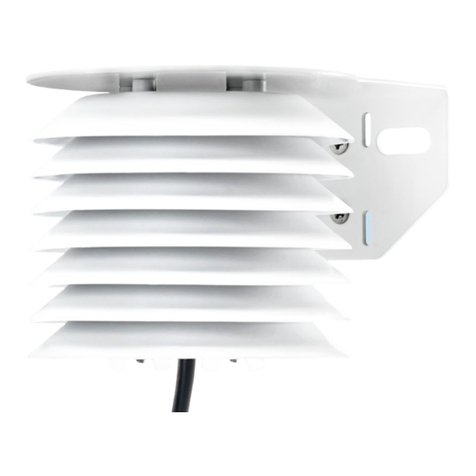
METER
METER ATMOS 14 User manual
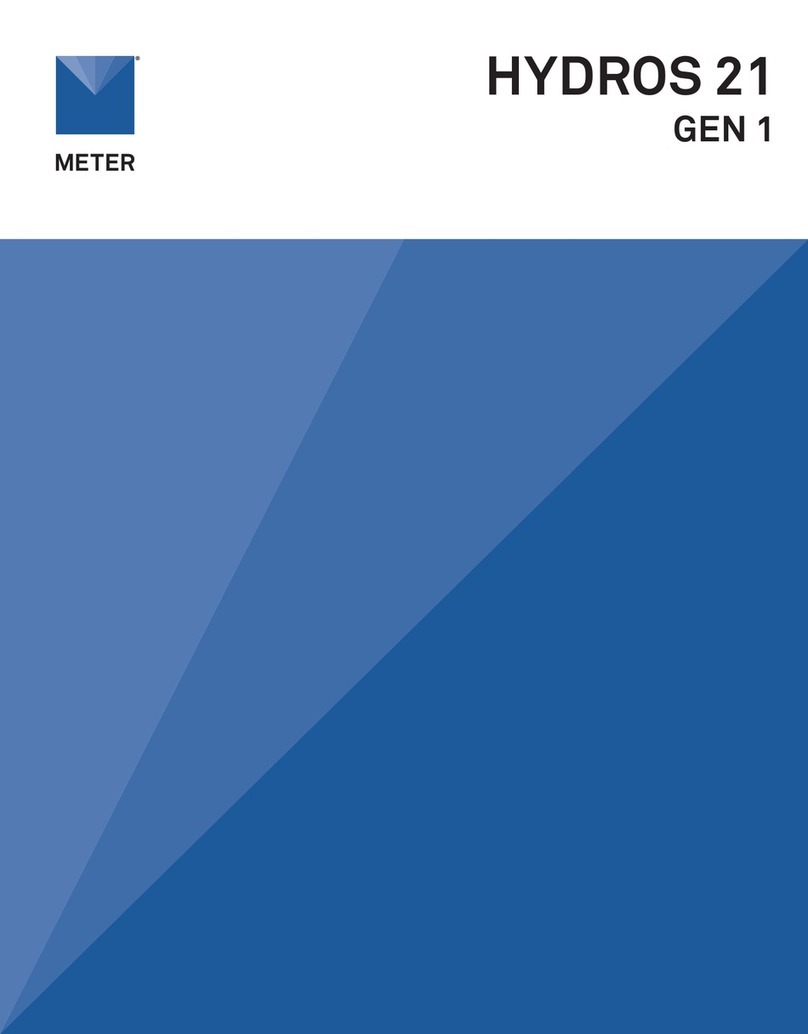
METER
METER HYDROS 21 GEN 1 User manual

METER
METER TEROS 12 User manual
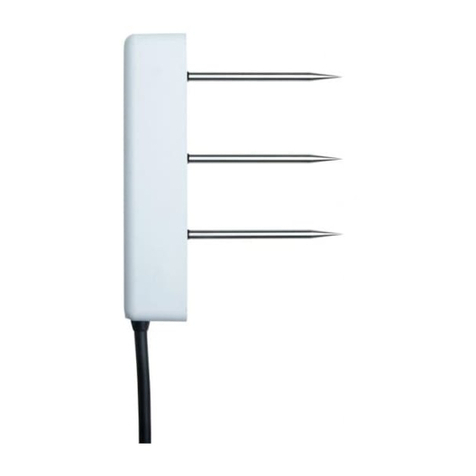
METER
METER TEROS 11 User manual
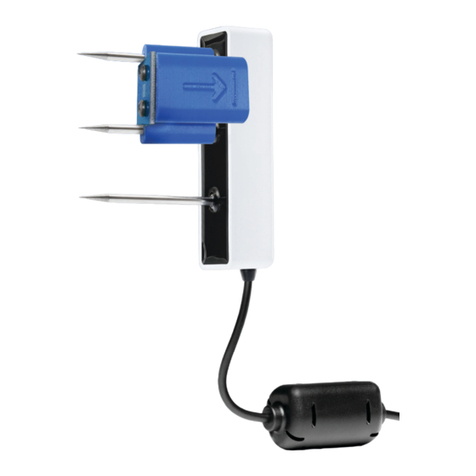
METER
METER TEROS VERIFICATION CLIP User manual

METER
METER ATMOS 14 User manual

METER
METER ATMOS 14 User manual

